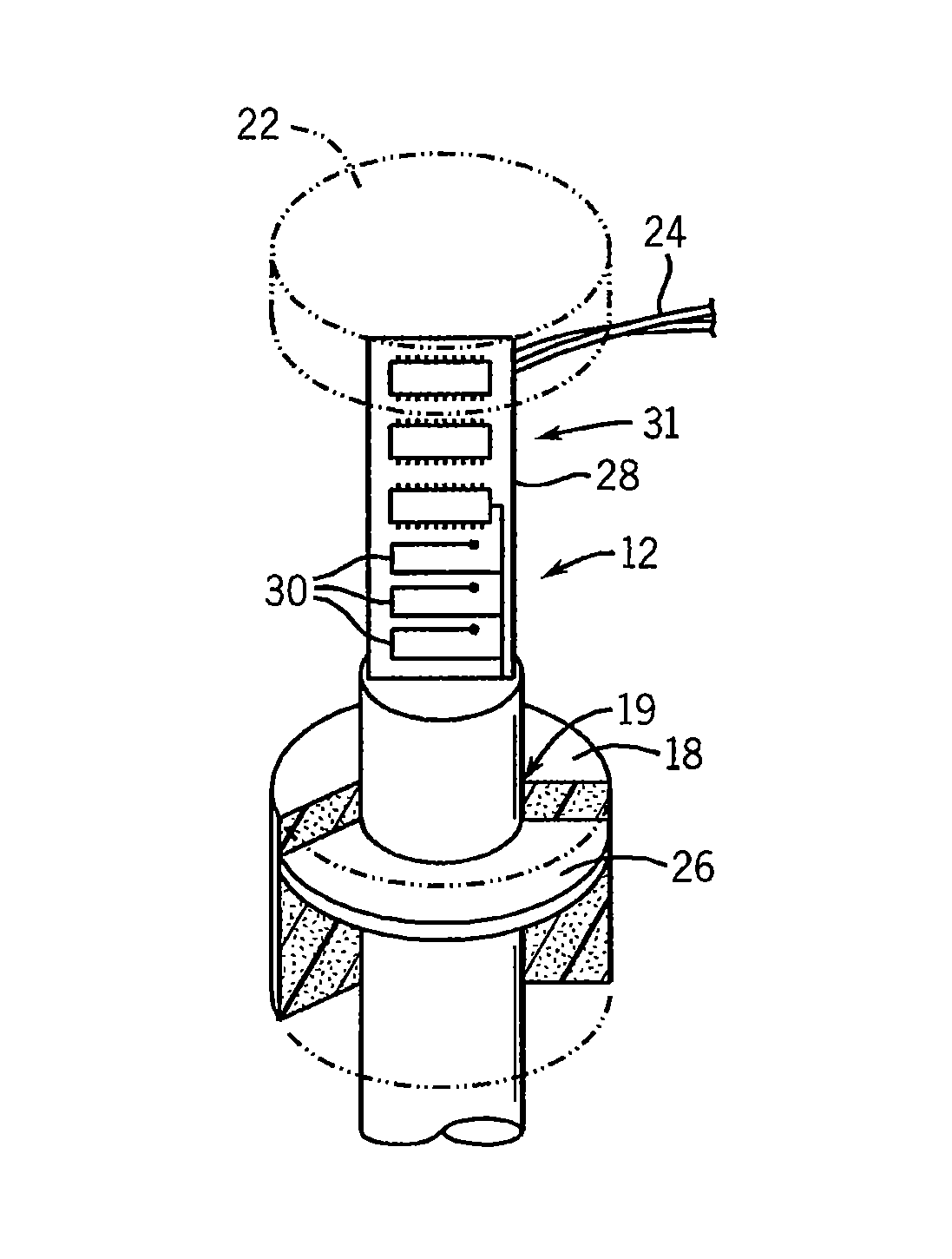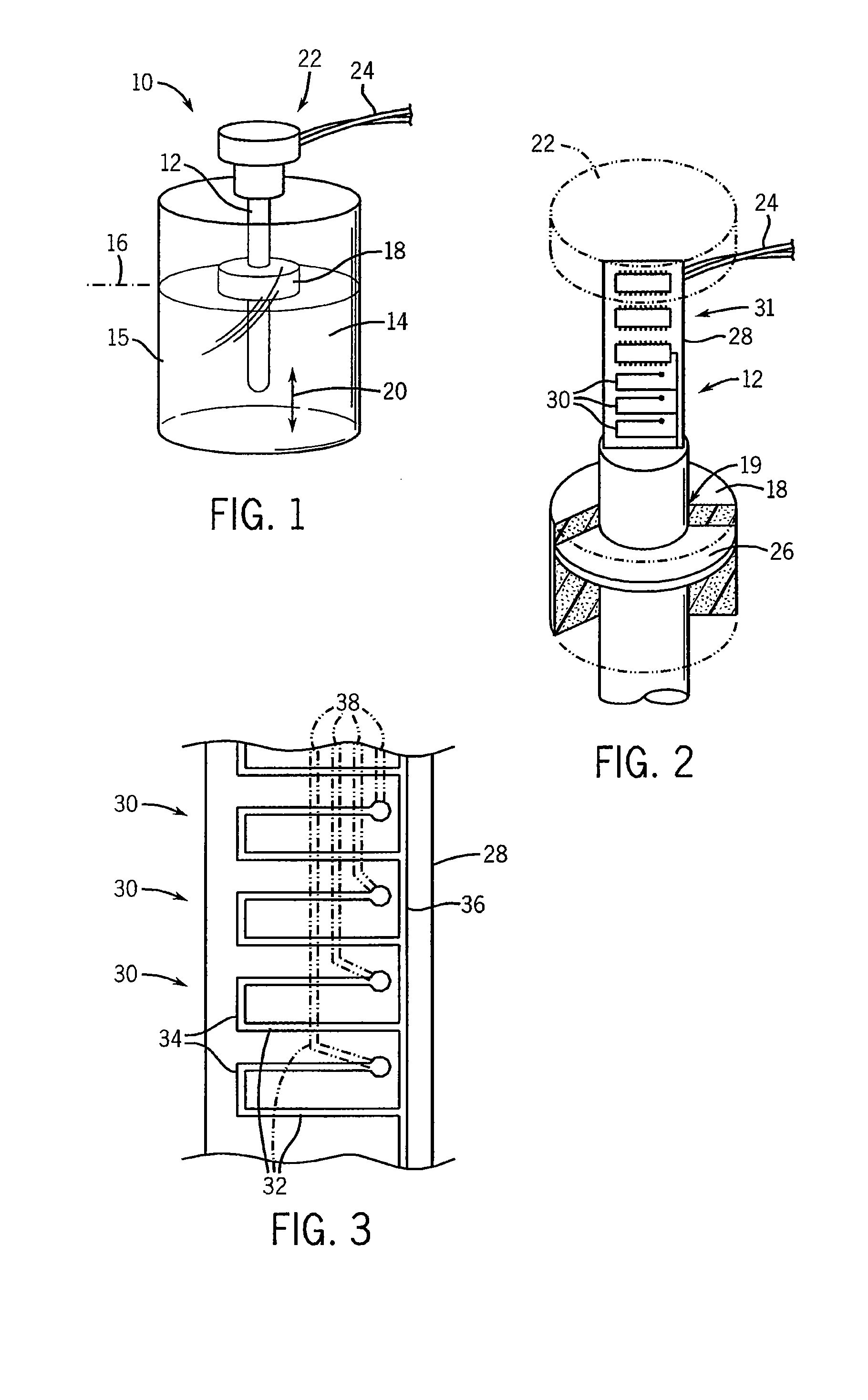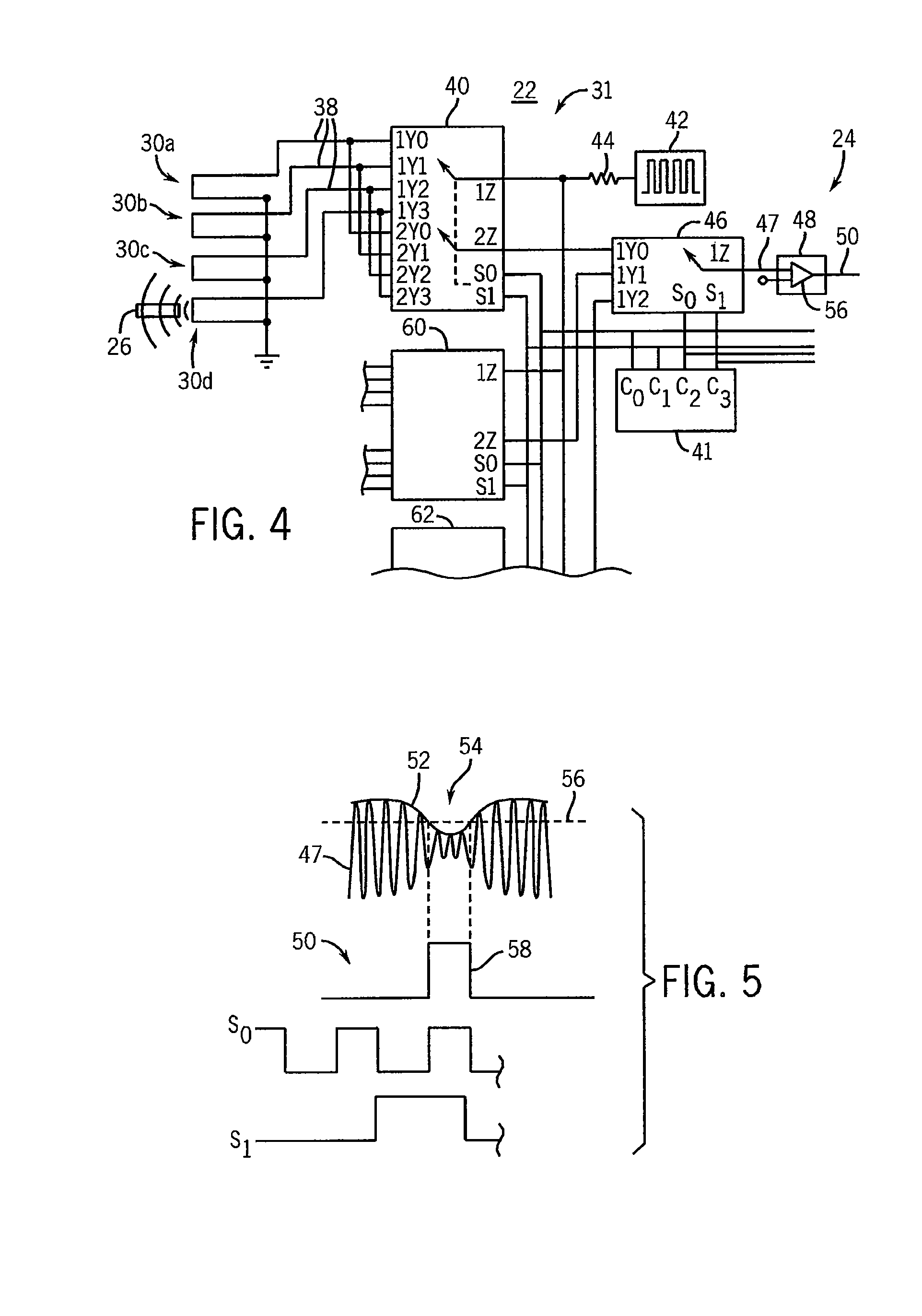Inductive liquid-level sensor
a liquid level sensor and inductive technology, applied in liquid/fluent solid measurement, instruments, machines/engines, etc., can solve the problems of reducing the sensitivity of the sensor to manufacturing tolerances and calibration loss, and achieve the effect of reducing the sensitivity of the circuitry to manufacturing variations, reducing calibration loss, and ensuring accuracy
- Summary
- Abstract
- Description
- Claims
- Application Information
AI Technical Summary
Benefits of technology
Problems solved by technology
Method used
Image
Examples
Embodiment Construction
[0030]Referring now to FIG. 1, a sensor 10 according to the present invention may have a central cylindrical shaft 12 adapted to extend downward into a liquid 14 held in a tank 15, the liquid having a liquid height 16. The present invention contemplates that the liquid 14 may, for example, be a solution of urea forming part of an emission control system for diesel engines.
[0031]Referring also to FIG. 2, a float 18 having a central cylindrical bore 19 may fit about the cylindrical shaft 12 to slide freely in a vertical direction 20 (as depicted) to rise and fall with changes in the liquid height 16. The material of the float 18 may encapsulate a conductive material 26 embedded therein so that the conductive material 26 is shielded from the liquid 14, the conductive material 26 preferably being in the shape of a ring with the opening of the ring 26 being concentric with the bore 19. In this regard, the material of the float 18 may be, for example, a closed cell or encapsulated foam ma...
PUM
 Login to View More
Login to View More Abstract
Description
Claims
Application Information
 Login to View More
Login to View More - R&D
- Intellectual Property
- Life Sciences
- Materials
- Tech Scout
- Unparalleled Data Quality
- Higher Quality Content
- 60% Fewer Hallucinations
Browse by: Latest US Patents, China's latest patents, Technical Efficacy Thesaurus, Application Domain, Technology Topic, Popular Technical Reports.
© 2025 PatSnap. All rights reserved.Legal|Privacy policy|Modern Slavery Act Transparency Statement|Sitemap|About US| Contact US: help@patsnap.com



